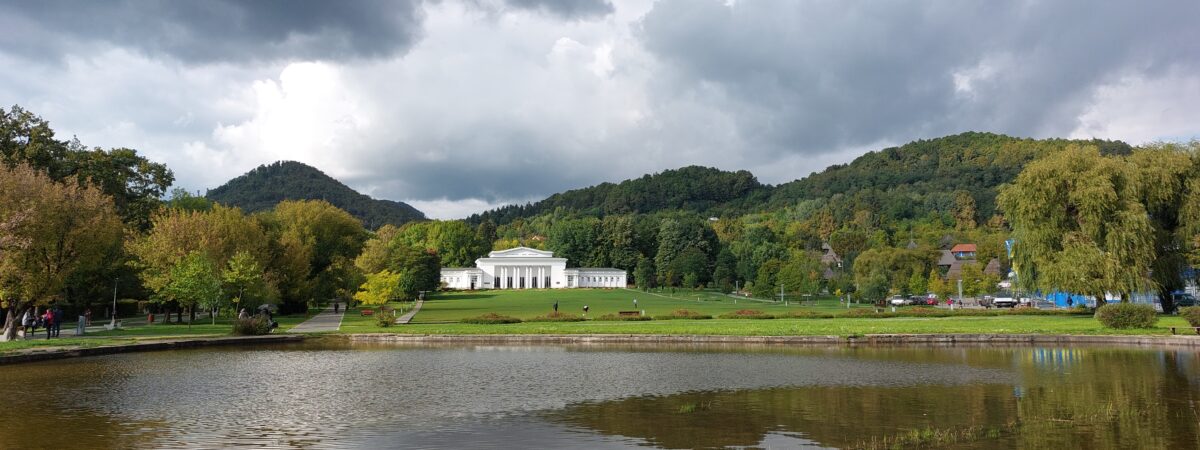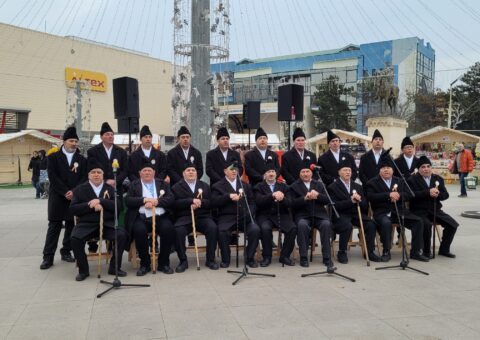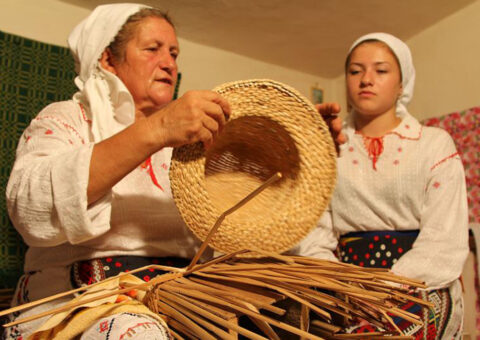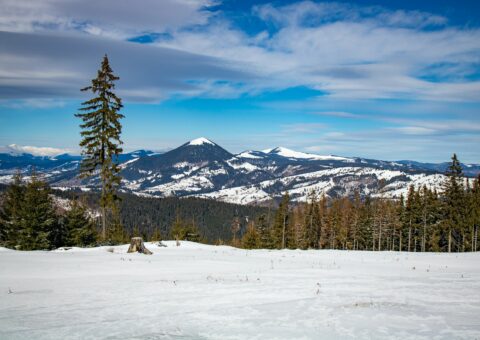Baia Mare, in northern Romania, is a city filled with history and connected, throughout this history, with the ancient inhabitants of this area, the Dacians. This cultural hub is a gateway to Maramureș — one of the country’s most spectacular rural regions — and well worth a few days to feel its rhythm. Local expert Ioana Lucaciu has suggestions on how to fill those days.
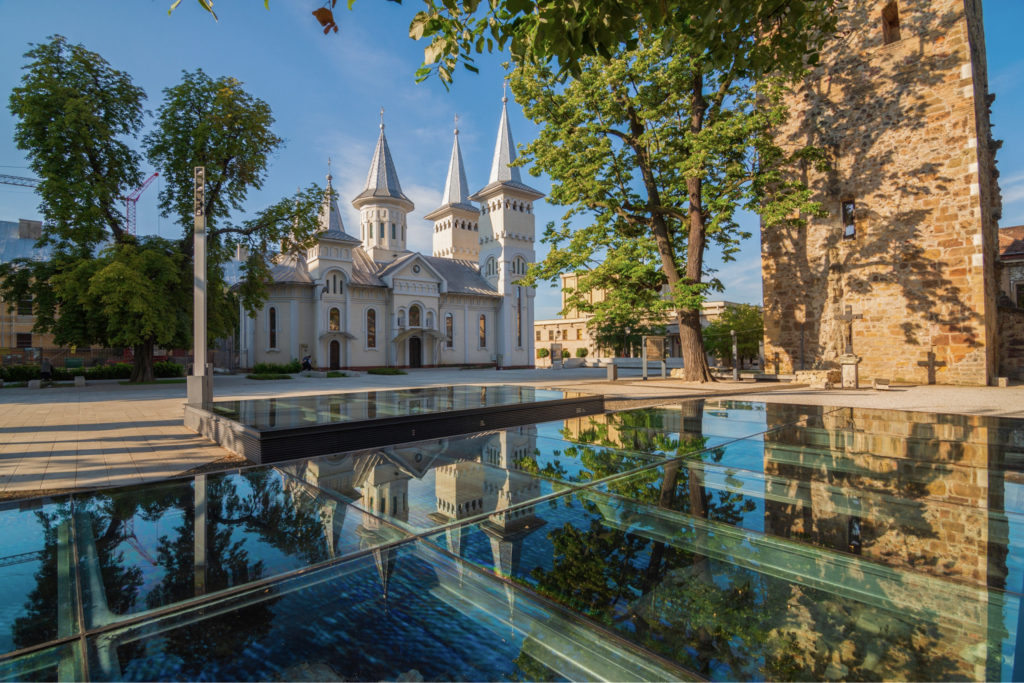
Upon Arrival
Once a visitor arrives in my city, I always recommend going straight to the historic Old Centre — Centrul Vechi, in Romanian. Restored in 2015, this district still feels mediaeval and is the location for great food and the oldest architecture in Baia Mare.
The best time to be here is during summer or early autumn — roughly June through September. That’s when the local climate (otherwise cold, as Baia Mare is surrounded by mountains and hills) is most pleasant, the local markets near the Old Centre are full of fresh, locally produced fruit and vegetables, and short trips to the surrounding outdoor areas are best enjoyed.
I tell first-time travellers to walk up the 45-metre-high Stephen Tower to get an overview of the city and surroundings. The tower represents the remains of the 14th-century cathedral built for the Hungarian King Stephen. This is also the tourist information point.
The best museum to start your journey and get a good sense of this city is the County History and Archaeology Museum on Monetariei Street. A visit will introduce the town’s history, provide a sense of its development around mining, and provide the opportunity to browse (and buy) books about Baia Mare and the Maramures Region.
Parents should take their kids to Queen Mary Park and the surroundings — known locally as Dealul Florilor (Flowers’ Hill), on the northern margin of the town and within walking distance from the Old Centre. There are playgrounds and a train to tour through the park. It is also a very good occasion to walk around in the open-air Village Museum and Ethnography Museum. In the newer part of town, the Planetarium and Astronomical Observatory, the largest in Romania, is also great for families.
Food from the Heart
Among the food (or dishes) my city is most proud of, the Christmas cozonac (rolled cake) is an absolute must. I like to go to the open-air Village Museum on Dealul Florilor, when they host the “Christmas in Maramureș” event, to really enjoy it. During this time, baking bread and rolled cake filled with walnut or poppy seeds in a clay oven is common.
When we get together to celebrate, pălinca is what people here traditionally drink. You will be served pălinca when visiting a family or you attend a traditional event. I like to gather my friends and go to La Pălincie for a round of good quality plum pălinca, whether there is a special occasion or not. The inner terrace here is particularly beautiful in the summer, and they also serve a variety of other Romanian drinks and delicious dishes, including deserts.
When I eat completely local, I will go to the restaurant at Mara Hotel in the New City Centre. I know the food here is locally sourced and prepared in a traditional manner. Still, it does not match the homemade food served in the guesthouses of Maramureș, as you will discover when you plan to visit the “extreme” Romanian north.
Another two classic, iconic restaurants include Bastion, featuring the traditional plăcinta (pie) with salty cheese, and La Tour Brasserie, next to the historical monument Stephen’s Tower. Both are near the Old Centre.
The part of town where locals come for traditional food is either the Old Centre or the neighbourhood of Mara Hotel (Mara Park), where several restaurants, cafes, and bistros prepare their culinary delights. As we still cook traditional meals at home, when we go out as locals, we will not necessarily look for Romanian specialties, but rather try to taste other foods. In addition to the above-mentioned restaurants, the favourite locations with an international menu are Millennium and Log Out Pub.
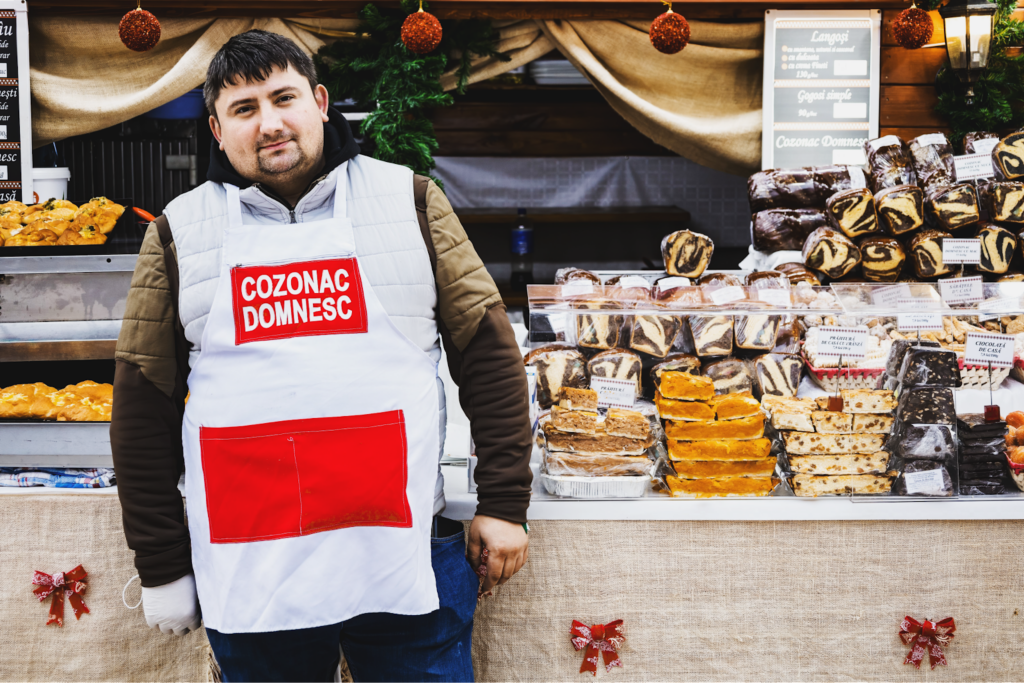
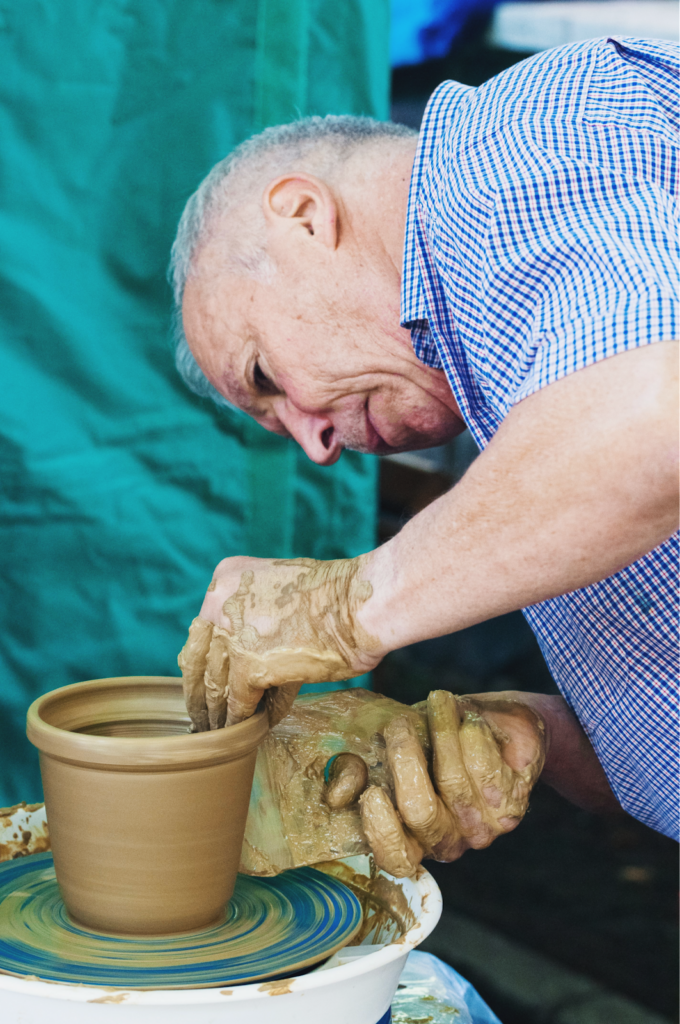
Shopping Locally
Baia Mare means “The Great Mine,” so my city is known for mining, as its name implies. The mining industry has dominated its evolution since prehistoric times and until the mines began to close in 1997. The greatest specialists in geology and mining lived and worked in Baia Mare and its surroundings, and most of the locals in this area worked in mining and related industries. Today visitors will find a city that is redefining its post-modern (and post-mining) identity.
The best outdoor food market in Baia Mare is Piața Izvoarele, the largest in town. It is close to the Old Centre and the Butchers’ Bastion, a remnant of the old town’s defense structure, which included seven such bastions for the guilds. The old town square hosts weekend food markets, where you can get a variety of local products from neighbouring villages.
I always take visitors to one of the city museums to buy real, local souvenirs. The products are adapted to each museum’s characteristics and the vibe is great, especially if you have already visited the museum. And we know to avoid products from regular shops because they are generally not representative of the city or locally made.
Getting Deeper into Baia Mare
A great book to learn more about my city is the newly released “Illustrated History of Baia Mare,” which covers the blooming period of 1800-1950, presenting its landmarks in terms of economy, society, education, and culture.
Most people know about the city’s mining history, but the Museum of Mineralogy and the History Museum should also be visited because they offer documented and well-structured information. The Museum of Mineralogy hosts a unique collection of the most representative and beautiful gems, minerals, and fossils from the former mines in the region. I also advise visitors to avoid planning museum visits on Mondays, as they are all closed.
Baia Mare is also known for its School of Painting and some of its painters are renowned internationally. The ateliers (23 in total are active today) are hosted by the Colony of Painters, which has turned into a cultural hub of the city and is definitely worth a visit.
My city is a place people are attracted to because of its beautiful outdoor surroundings. “Le plein-air,” as the French put it, is so picturesque that many artists depicted various parts of the city in their works, some of which are exhibited at the Museum of Arts in the Old Centre. You will find locals strolling in parks or hiking in the hills. During the winter (December-February), almost everyone goes skiing on one of the nearby slopes.
To really celebrate my city at its best, come during the last week of September because that is when the city hosts the famous Chestnut Festival. The sweet chestnut tree (Castanea sativa) is an emblem of the city, as it occurs naturally in patches of forest on the southern slopes of Ignis mountain, in the northeastern part of the city. This is said to be the northernmost reserve of chestnut trees in Europe. The festival lasts for a weekend, when chestnuts are ripe and you can eat them in a variety of ways (boiled, roasted, mashed etc.). On that occasion, you can also enjoy the unique exhibition of flower arrangements (Expo Flora), open-air fairs, activities for children, and various cultural events.
Most people think of my city as a place to cross on their way to historical Maramureș, but really this is a destination to enjoy at least for several days, whether you are continuing north or not. With its small-town advantages, its appealing historical background, the School of Arts, and its numerous outdoor locations, Baia Mare will keep you pleasantly busy.
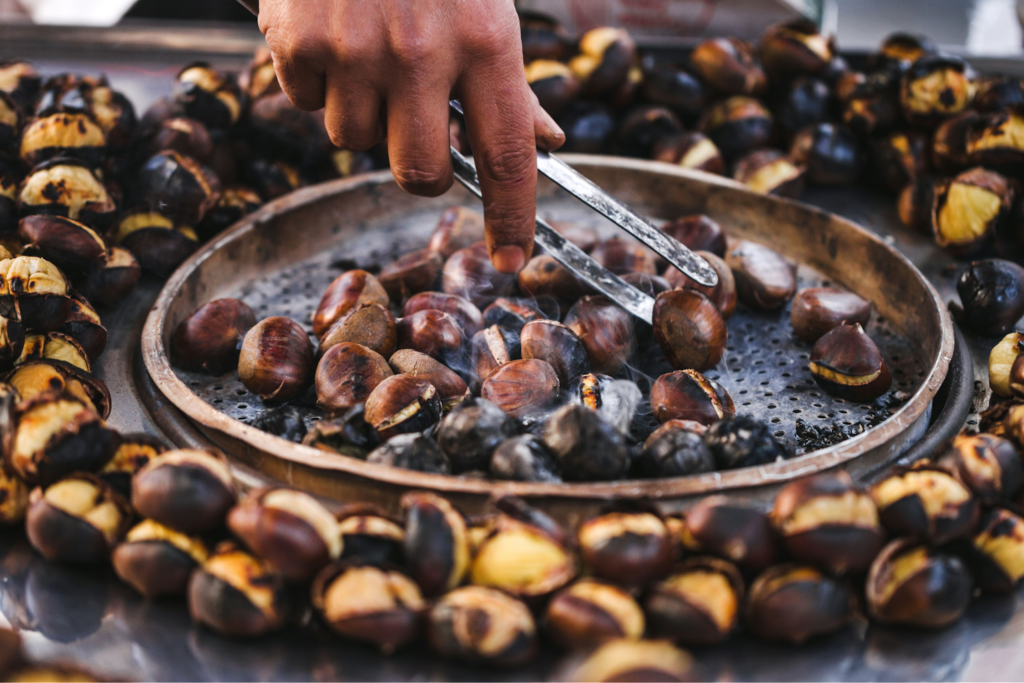
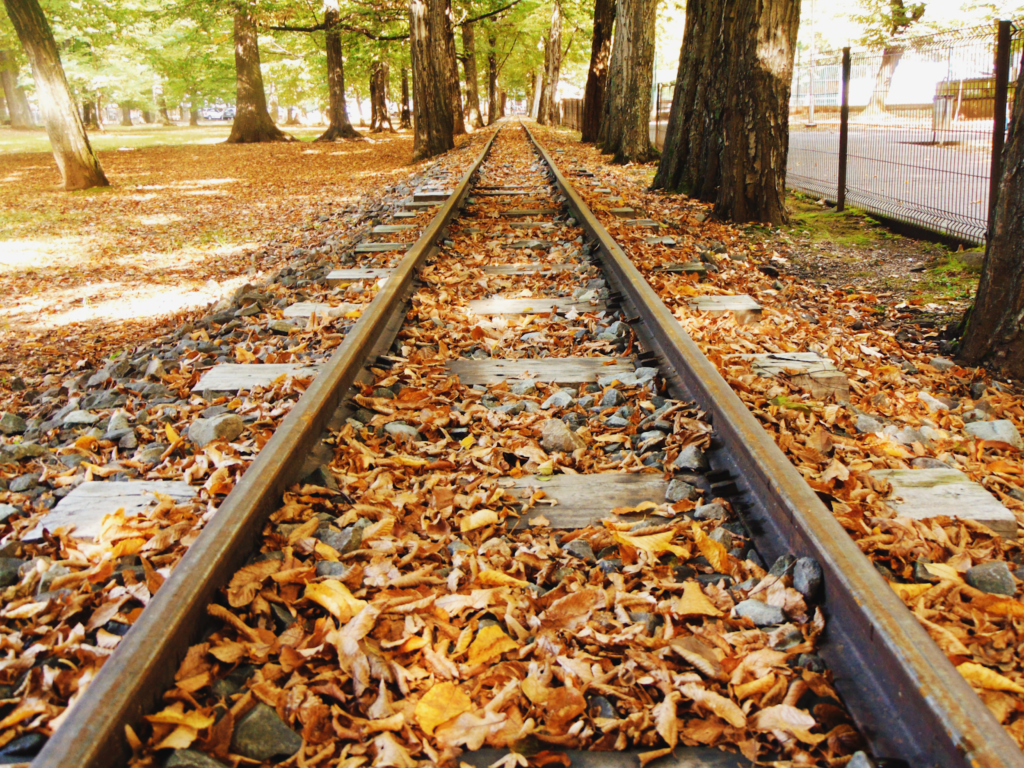
Getting Around Baia Mare
One thing you should know about getting around my city is that the network of public transport (URBIS) relies mostly on buses, which makes it rather basic, but reliable and inexpensive. The bus stops around the city display the buses’ schedule. If you are a larger group, consider taking a cab (I recommend Gallant, charging 3 lei/km) or Bolt, a local transport network similar to Uber (via Google Play/AppStore).
The best way to travel in my city to have as little impact as possible is on foot or by bicycle. As the city is small, it is easy to move everywhere on foot in little time.
Luckily this method of transportation also allows me to avoid traffic and parking, visit more places, and interact more with people. Bike rental is available only at the Ski & Bike Centre near the old town square (around 16 euro/day).
Outside the City
To get away and into the outdoors, I like to take bus no. 1 all the way to Limpedea quarry and, from there, walk up to the borcut of Chiuzbaia on the tourist trail marked with a blue dot. Borcut is traditionally a regional word for spring of naturally sparkling mineral waters, rich in iron or sulphur. Because of the volcanic structure of Gutâi and Țibleș Mountains, there are about 100 such springs in Maramureș.
For a day trip just beyond my city, I like to visit SIMARED Nautic Club, located on the side of Firiza Lake, 10 kilometres north from Baia Mare.
Many people will head to Maramureș, but locals know to go to the many natural beauties that are somewhat hidden in the neighbourhoods of Baia Mare. These, along with the city museums, are worth visiting before you enter the Wooden Civilization, as they call the historical rural region of Maramureș.
I really enjoy the view of my city from Igniș Peak (1,307 metres), a former volcano that overlooks the city like a guardian. If you want to witness a spectacular summer sunset, head to the village of Chiuzbaia or Ferneziu (in between Ignis and Baia Mare), to see the sun against the mountain. There are regular buses connecting the city to these villages and you can get there in about half an hour.
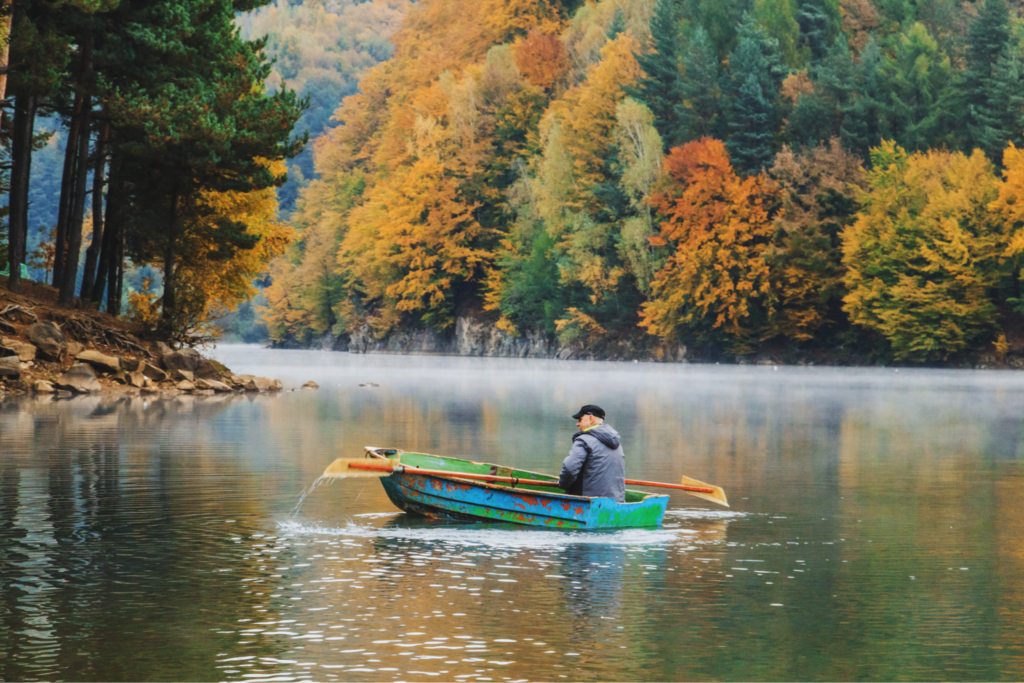
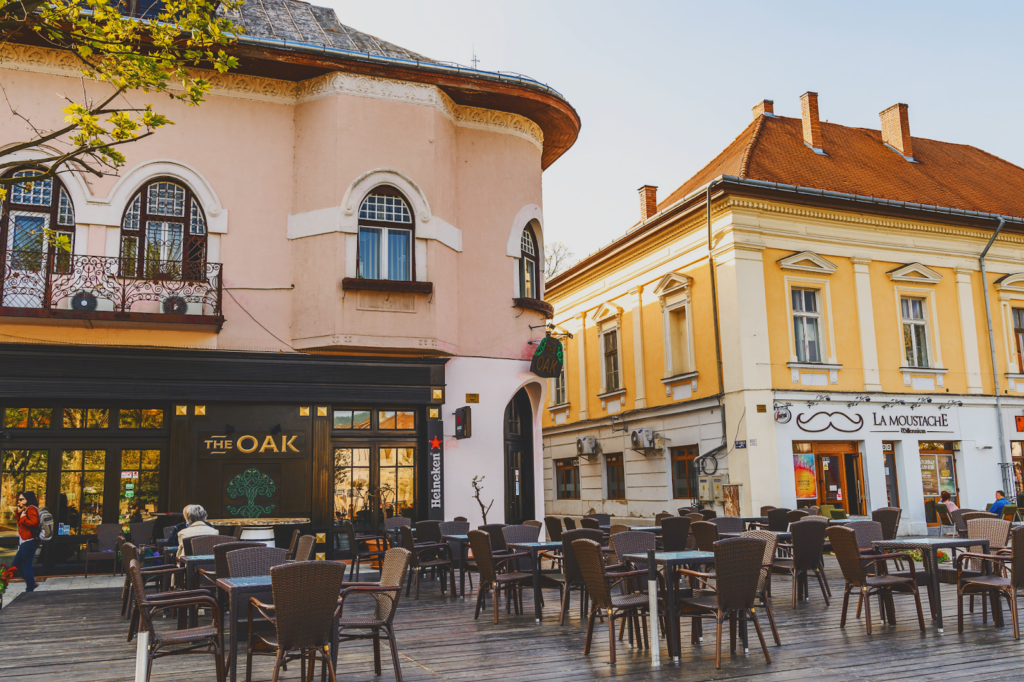
Connecting with Locals
When I want to have fun and celebrate being out in my city, I go to Queen Mary Park and Câmpul Tineretului, where I can spend an entire day just relaxing in the sun, watching the people strolling, or enjoying a drink on a terrace. Sometimes I take with me a tasty, nourishing sandwich made by Bizo, probably the best bakery in town.
To hang out with my friends and go to a real insider spot, I go to Le Bistrot or Buonissimo near Mara Park, where I like to enjoy delicious sweets like ice cream or cakes — along with good coffee.
The best resource for finding out what’s going on around town is the electronic newsletter eZiarultău | Născut în Maramureș.
The Painters’ Colony is my first choice for music because they host great jazz concerts. For classical music I sometimes go to the Saint Trinity Church, right next to Stephen’s Tower. One of the oldest churches in the city, it also hosts beautiful carol concerts before Christmas. And when I feel like dancing, I go to one of the locations of the Chestnuts Festival for the open-air concerts.
Finding Solitude in Baia Mare
When I want to go somewhere to sit and meditate about my incredible city, I go to Câmpul Tineretului. Its position between the city and Dealul Viilor always helps me connect with myself and my surroundings.
If I chose the one place that makes me most proud of my city, it would have to be the Old City Centre, because of its special atmosphere, the numerous monument buildings that look like gingerbread houses, Stephen’s Tower, and the surrounding square.
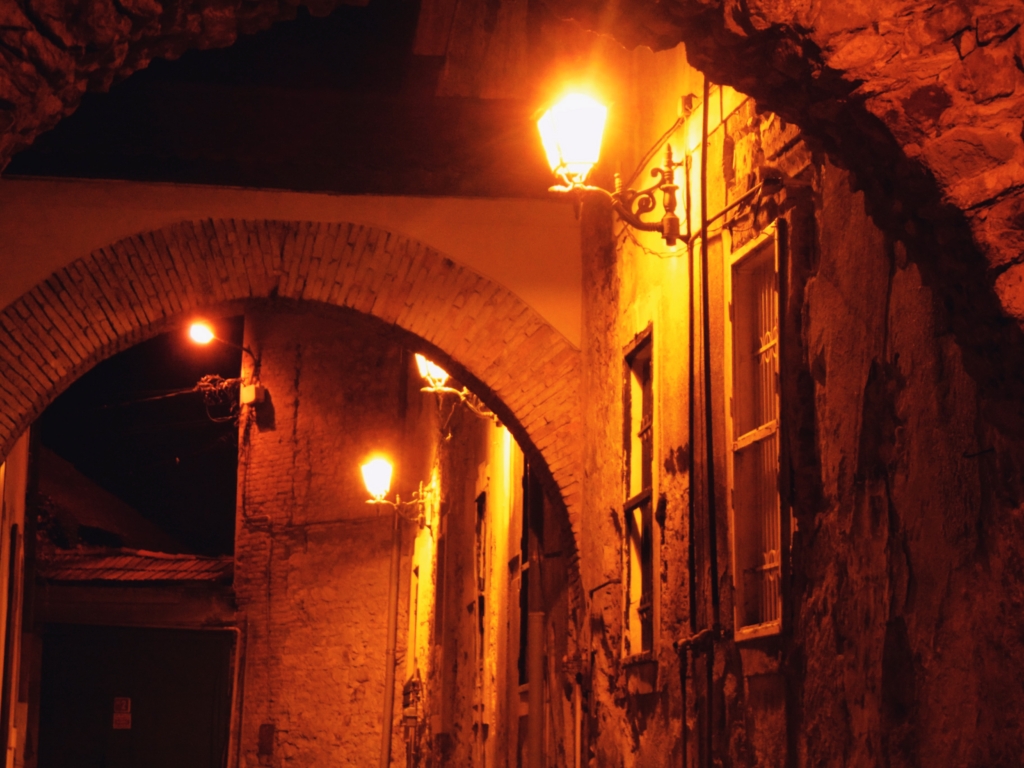
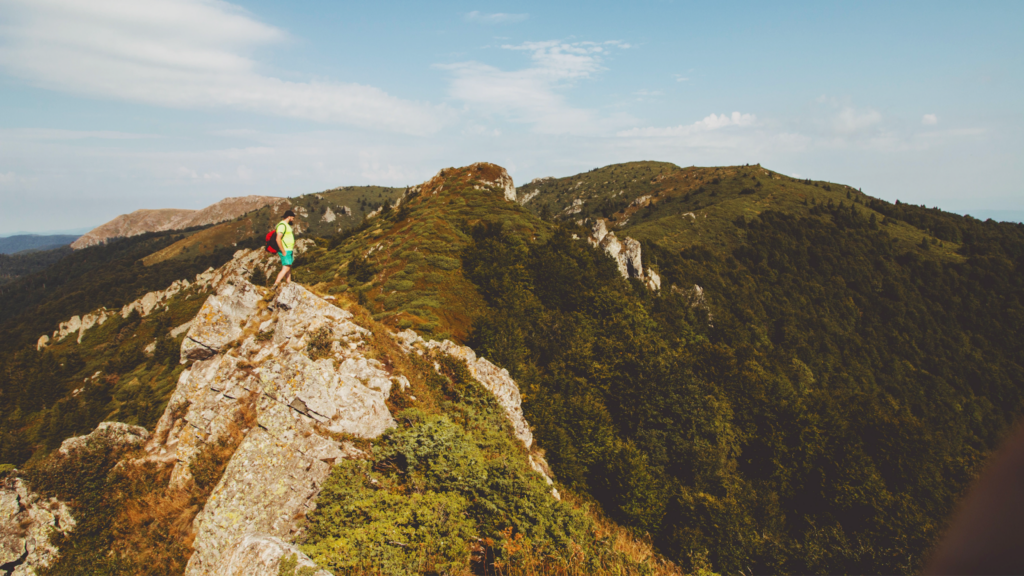
When the Seasons Change, This City Shines
Spring (March-May) is the best time to take a walk or hike to one of the natural sites surrounding the city, easily accessible by bus or by car: Dealul Florilor, Limpedea, the former quarry with its basalt columns, Groapele Chiuzbăii on the way to Igniș Peak, Firiza Lake, Creasta Cocoșului nature reserve, and Mogoșa.
I always recommend visitors stay longer in Baia Mare in the summer (June-August) because this is when it is warmest (but still not hot), you have more time for being outdoors, and various events take place in the city (concerts, theatre plays, film festivals). Plus, the Painters’ Colony hosts arts exhibitions.
The fall (September-November) here is magical when you take a walk from the New City Centre to the Village Museum, crossing the residential area that follows Valea Rosie Stream and then Queen Mary Park. Make sure to take the small streets that lead straight to the park restaurant. When you get to the park, at the foot of Dealul Viilor, continue your walk through the Village Museum, as it is most beautiful in autumn.
The winter (December-February) is a great time to go skiing in the surrounding mountains. There are several excellent slopes in Mogoșa, Șuior, and Cavnic. Cross-country skiing is also possible.

